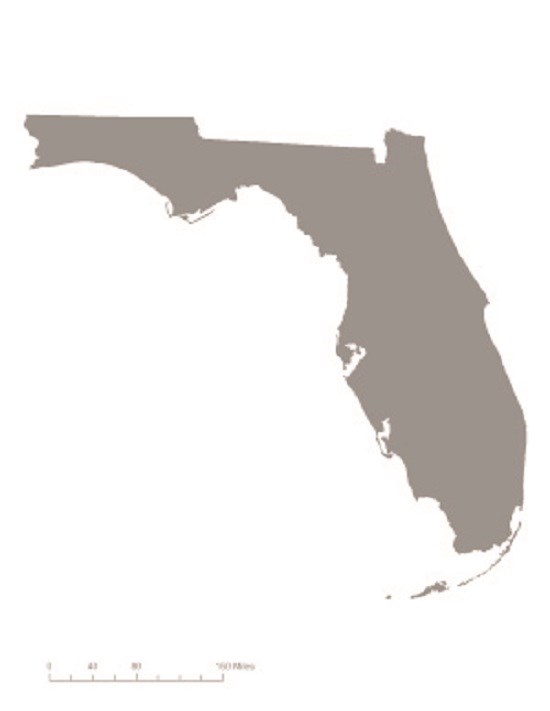Last updated: September 5, 2019
Article
Florida and the 19th Amendment

Women first organized and collectively fought for suffrage at the national level in July of 1848. Suffragists such as Elizabeth Cady Stanton and Lucretia Mott convened a meeting of over 300 people in Seneca Falls, New York. In the following decades, women marched, protested, lobbied, and even went to jail. By the 1870s, women pressured Congress to vote on an amendment that would recognize their suffrage rights. This amendment was sometimes known as the Susan B. Anthony amendment and became the 19th Amendment.
The amendment reads:
"The right of citizens of the United States to vote shall not be denied or abridged by the United States or by any state on account of sex."
In the late 1800s, regional suffrage organizations began to form in states across the US. But the suffrage movement had roots in abolitionism (movement to end slavery). As a result, southern women's suffrage groups were slower to organize. Organized efforts to promote women’s suffrage lagged in Florida until Ella C. Chamberlain founded the Florida Women’s Suffrage Association in 1893. But when Chamberlain moved out of state four years later, the organization disbanded.
Women’s suffrage did not have widespread support in the state until the 1910s when groups like the Florida Equal Franchise League and the Orlando Suffrage League were founded. Many women’s suffrage groups in Florida often only supported the white woman’s right to vote. As a result, African American women were frequently excluded from the suffrage organizations of white women.

Photograph taken by Edmonston, Washington, D.C., Records of the National Woman’s Party Collection, Library of Congress. https://www.loc.gov/item/mnwp000040/
Women from Florida were also involved in national organizations like the National Woman’s Party. By the late 1910s, their efforts were paying off. After decades of arguments for and against women's suffrage, Congress finally approved the 19th Amendment in 1919. After Congress passed the 19th Amendment, at least 36 states needed to vote in favor of it for it to become law. This process is called ratification.
States across the US held special sessions to vote on the amendment. Some states ratified the amendment while others voted to reject it. Florida, however, did not hold a vote on the amendment. Many politicians and newspapers in the state were against women's suffrage.
On August 18, 1920, Tennessee became the 36th state to ratify the 19th Amendment, recognizing women’s right to vote.
On May 13, 1969, Florida showed its support for women’s suffrage by belatedly ratifying the 19th Amendment.

Florida Places of Women’s Suffrage: State Capitol Building
In 1913, the Equal Franchise League of Jacksonville petitioned the Legislature to consider a bill recognizing women’s suffrage rights. Suffragists were given the opportunity to speak at an evening session that April in front of the state representatives. Citizens packed the Capitol Building to hear the argument for women's suffrage. The bill was rejected and Florida women had to wait another seven years to exercise the right to vote. The Florida Capitol Building is listed on the National Register of Historic Places. It is no longer houses the state legislature, but operates as the Florida Historic Capitol Museum. It is open seven days a week.

The State Capitol Building is an important place in the story of ratification. It is listed on the National Register of Historic Places.
